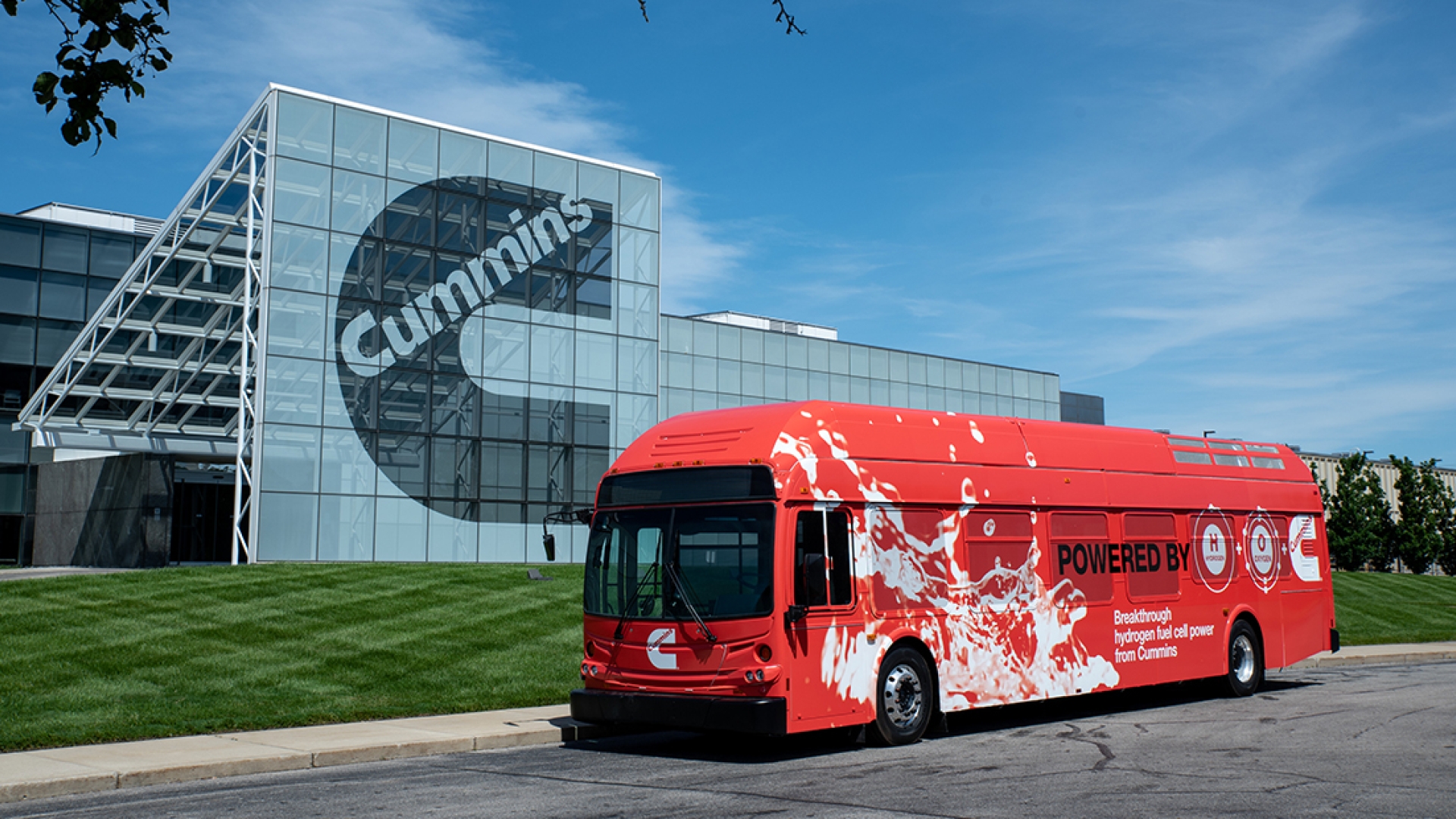Cummins aboard the e-bus express
Par Cummins Inc., chef de file mondial des technologies d’alimentation

It’s all aboard the e-bus express in Australia and New Zealand as electric buses seem to be on an unstoppable rise, with an almost bewildering array of supplier promises and products dominating the public transport scene.
The overwhelming trend towards the rapid electrification of public transport bus fleets is happening globally as governments commit to a zero emissions future with bold plans and increasing action to decarbonise bus fleets. In Australia and New Zealand, governments have established clear timelines to decarbonise their fleets and have committed heavily to both trials and purchases of zero-emission buses.
So where does that leave Cummins, the largest single supplier of diesel engines to the Australian bus and coach industry?
“Cummins is perfectly positioned to be a key player in the electric bus market, wherever that market is globally and whether it be with battery-electric or hydrogen fuel cell electric technology,” says Andrew Steele, Bus and Coach business manager for Cummins Asia Pacific.
Cummins is investing billions of dollars in alternative powertrain technologies as it commits to net-zero carbon by 2050 under its Destination Zero strategy which is to go further, faster to reduce the greenhouse gas (GHG) and air quality impacts of its products.
“Technological innovation, brand reputation and credibility are core to Cummins’ history, and they are now more important than ever as new technologies and suppliers emerge in the burgeoning market,” he says.
"Cummins has built up and acquired excellent capabilities in electrification, hydrogen fuel cells, and hydrogen generation technologies to accelerate the path to zero emissions. The acquisition of Meritor is also bringing some fantastic electric powertrain components into the Cummins family."
In the US, hundreds of school buses feature Cummins’ battery-electric technology while the country’s leading producer of heavy-duty transit buses, Gillig, last year celebrated the delivery of its 100th electric bus in partnership with Cummins.
While all the buzz is around electrification, there are challenges in adopting electric vehicles at scale, including purchase cost, energy supply infrastructure, electricity grid impacts, and skilling up to maintain and operate a fleet of electric buses.
"While Cummins is accelerating the transition to zero-emission technologies, we do acknowledge many operators are heavily invested in their existing diesel fleets which will remain in service for many years. In the short-term, there may also be a need to purchase new diesel buses while some of the challenges of getting to zero-emissions are resolved," says Andrew Steele.
“Either way, Cummins diesel engines will continue to provide increasingly clean, affordable power to customers in the decades ahead and Cummins is committed to supporting those customers.”
Cummins sees the internal combustion engine (ICE) as an important transitory technology before Destination Zero is reached.
“Net-zero emissions is the ultimate goal, however the pathway to this target may require some transition through lower carbon solutions, while the technology and infrastructure challenges of zero emissions vehicles are solved,” he says.
"There are still significant gains Cummins can achieve with diesel internal combustion engine technology in reducing atmospheric pollutants. Our Euro 6 engine, for example, slashes particulate matter by 50% and oxides of nitrogen by 80% compared with the Euro 5 engine."
Cummins is developing 'fuel agnostic' platforms for its new-gen B, L and X-series engines. Each engine series will be available with diesel, natural gas or hydrogen fuelling while achieving high parts commonality. For each engine series, everything below the head gasket will be common components, while above the head gasket will be different components for the specific fuel type.
As Cummins pursues its aspiration to power customer success with net-zero emission technologies by 2050, Srikanth Padmanabhan, President of Cummins Inc. Engine Business, states: "Getting to zero is not a light-switch event. Les émissions de carbone que nous relâchons dans l'atmosphère aujourd'hui auront un impact durable. Cela signifie que tout ce que nous pouvons faire pour commencer à réduire l'empreinte carbone aujourd'hui est un avantage pour la planète.
« Disposer d'une variété d'options à faibles émissions de carbone est particulièrement important, compte tenu de la diversité des cycles d'utilisation et des environnements d'exploitation dans les nombreux marchés que nous servons. » There is no single solution or 'magic bullet' that will work for all application types or all end users."
Profils d'auteurs

Cummins Inc., chef de file mondial des technologies d’alimentation
Cummins Inc., un leader mondial des solutions d'alimentation, comprend cinq segments d'activité - Composants, Moteur, Distribution, Systèmes d'alimentation et Accelera de Cummins - soutenus par sa fabrication mondiale et son vaste réseau de services et de soutien, sa main-d'œuvre qualifiée et sa vaste expertise technologique. Cummins s'engage à sa stratégie Destination Zero - l'engagement de l'entreprise envers la durabilité et l'aide à ses clients pour naviguer avec succès dans la transition énergétique grâce à son large portefeuille de produits. Cummins compte environ 69,900 employés et a réalisé $3.9 milliards de dollars de ventes, pour un total de $34.1 milliards de dollars en 2024. Découvrez comment Cummins mène le monde vers un avenir d'alimentation plus intelligente et plus propre sur www.cummins.com.
Étiquettes associées